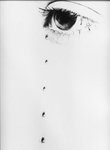trackend
Chief Master Sergeant
Perhaps I can ask you Guys who are keen photographers about your Camera kits. I used to do some serious exhibition photographic work but it was architectural and portraiture using a Mamiya RB67 I never did action shooting as you can imaging a medium format is not ideal so have you any tips In capturing aircraft action using 35mm or digital. I'm sure some of the other fellas on here would like to learn a bit as well
This is one of works I did and as you can see it is very different from Aircraft Photography. Sorry to be a pain can I ask you not to copy this pic as it has special meaning to me cheers fellas.
This is one of works I did and as you can see it is very different from Aircraft Photography. Sorry to be a pain can I ask you not to copy this pic as it has special meaning to me cheers fellas.

